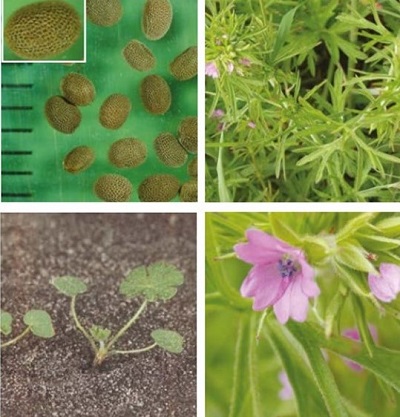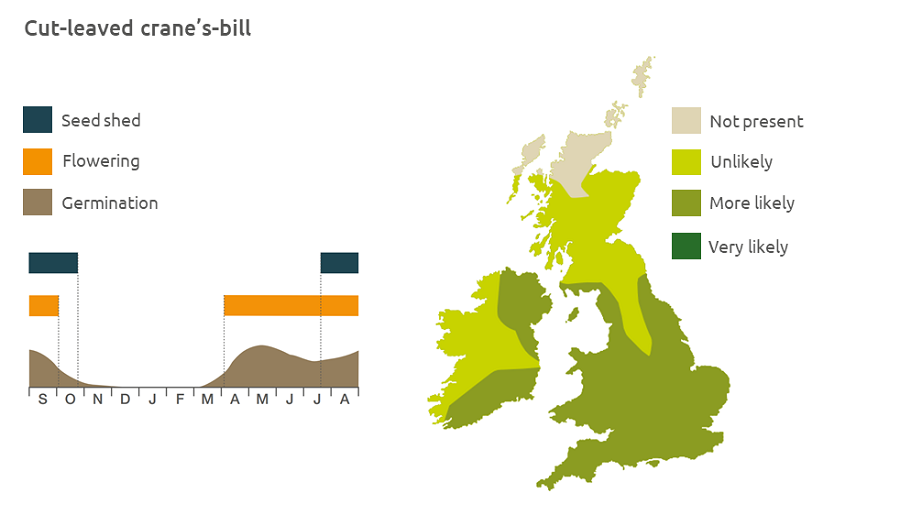- Home
- Knowledge library
- Distribution and biology of cut-leaved crane’s-bill in the UK
Distribution and biology of cut-leaved crane’s-bill in the UK
Cut-leaved crane’s bill is particularly competitive in oilseed rape and has small pink flowers. Find out how to identify and control this broad-leaved weed.
Overview
Cut-leaved crane’s-bill (Geranium dissectum) is fairly common in cereal crops, particularly on lighter soils and fallows. Reproduction is by seed and 80–90% of the seeds germinate. Autumn-germinating plants can overwinter.
- It is particularly competitive in winter oilseed rape
Description
It is a hairy, semi-upright or sprawling, branched annual dicotyledon which grows to 60 cm tall. The small pink flowers have five notched petals.
Key features
Plant: The deeply divided leaves have seven lobes and a rounded outline. Stem and leaf hairs frequently end in glands (a hand lens is required).

Location and life cycle

Geographic distribution
Cut-leaved crane’s-bill grows in disturbed warm soils up to an altitude of 350m.
Soil type
It prefers loose, nutrient-rich, fresh loam soils.
Seed statistics
- Seed longevity: 1–5 years
- Germination depth: 6 cm
- Seed weight: 1.67 mg
- Seeds/flower: 5
- Seeds/plant: 0–9,500
Management
For advice on herbicides, please speak with your agronomist or adviser.
When was this information last updated?
This page is based on content from the encyclopaedia of arable weeds publication. Since it was first released in 2008, the publication has been redesigned several times but not revised. However, it remains a good foundation for general information on the distribution and biology of weeds.

